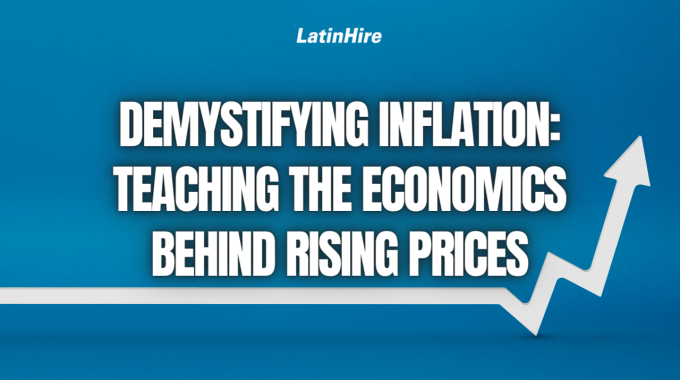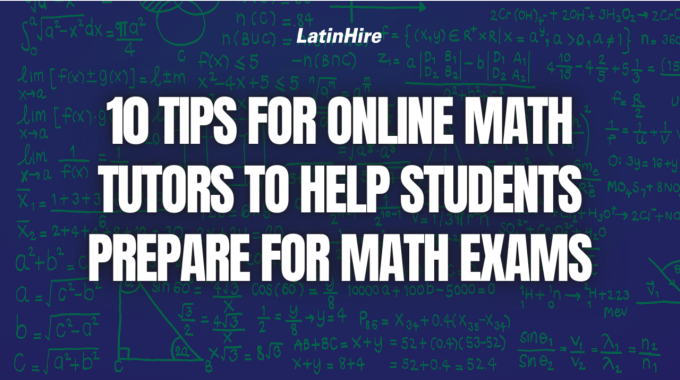Hydrocarbons form the backbone of organic chemistry, and understanding how to name and draw them…

Demystifying Inflation: Teaching the Economics Behind Rising Prices
Inflation may seem like a foreign concept to students at first glance, but little do they know that they’ve been exposed to inflation all their lives. You can start introducing inflation by asking your students what is something they’ve bought over the years and what they’ve noticed about the prices. Many of them will mention that the prices have generally gone up.
This is where you can give this phenomenon a name: “inflation”.
In this article, we’ll explore how to teach students about inflation using analogies and real-life examples to make the learning process more engaging and relatable.
What is Inflation?

Once you’ve completed the intro activity and got students thinking about price increases of their favorite products, provide a simple definition of “inflation”. You can say something like, “Inflation is the rate at which general prices of goods and services increase over time, which decreases purchasing power.”
Decreasing purchasing power means that the same amount of money can buy less things. This means, even if your income remains the same over the years, with rising prices, your purchasing power decreases. In simple terms, if someone is earning the same salary year after year, they are becoming “poorer” as they can buy less goods and services. Isn’t that bizarre??
Using the Basket of Goods and Services to Understand Inflation
This concept can be clarified by using the imaginary basket of goods and services. Ask your students to imagine a basket that contains a variety of goods and services that people typically buy. Brainstorm as a class what these purchases are and write them on the whiteboard.
Explain that this basket represents the average consumer’s spending habits, including items like groceries, clothing, housing, transportation, and more. The prices of these items collectively provide a snapshot of the cost of living.
To calculate how much inflation has occurred, we need a baseline year, which is the reference point that all future prices can be compared to. Using the simple formula of the consumer price index (CPI), we can measure inflation. The CPI compares the current cost of the basket of goods and services to the cost in the baseline year.
Formula for calculating CPI:
CPI = Cost of Basket in Current Year / Cost of Basket in Baseline Year x 100
If the CPI is greater than 100, it indicates that prices have increased since the baseline year. If it’s less than 100, prices have decreased. For example, a CPI of 120 means prices have, on average, increased by 20% since the baseline year.
Inflation in the Real World

In the United States, from 2011 to 2021, inflation has averaged 1.88% annually, which is pretty great, as the expected rate of inflation is 2-3% per year. However, in 2022, data shows that there was an annual inflation rate of 8%!
This is likely due to the COVID-19 pandemic as supply-chain shortages resulted in less production world wide. Governments also printed more money to give out and support families in need. With a decrease in production and an increase in the money supply, the cost of goods and services will naturally go up.
You can use data from different countries to show your students inflation trends over the years and have a discussion about world events that happened during years of high inflation.
Let’s dive further into the causes of inflation.
What Causes Inflation?
Inflation is primarily caused by the interaction of supply and demand for goods and services within an economy. When the demand for products and services exceeds their supply, sellers often respond by raising prices. Additionally, inflation can be influenced by external factors, such as increases in the costs of production, like rising raw material or labor expenses.
Another key player in the inflation game is the government, which can contribute by printing more money. When a government pumps more money into circulation without a proportional increase in goods and services (like during the pandemic), it can lead to too much money chasing too few goods, resulting in a general increase in prices.
The Auction Analogy to Understand the Government’s Role in Inflation

Picture an auction where everyone has a certain amount of money to bid on items. If the government suddenly doubles everyone’s money, sellers will start asking for higher prices because they know people have more money. This illustrates how an increase in the money supply by the government can lead to a general rise in prices.
Discussion with Your Students
After talking with your students about their own experiences with rising prices and the concept of inflation, they can quickly see that inflation is not just an abstract economic concept; it affects our everyday lives.
By using relatable analogies and real-life examples, students can gain a practical understanding of how inflation works. As they connect these ideas to the world around them, the complexities of economics become more approachable.
We hope you enjoyed this article. If you are an economics teacher, how do you introduce the idea of inflation to your students? Share your tips in the comments below!



